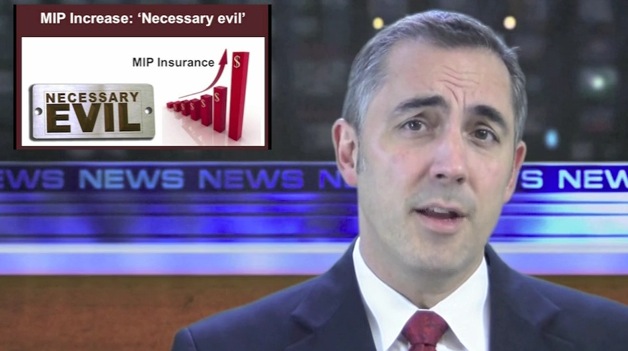One U.S. Senator calls for reform saying flood insurance premium hikes endanger some reverse mortgage borrowers.
Continue readingGiving LTC Some TLC: Planning for Long-term Care
[ad#Take Charge America]
Do your reverse mortgage prospects and clients have a plan for the unexpected?
According to a recent survey of 449 financial advisors, even prudent seniors overlook a critical component of retirement planning. When the experts were asked, “What’s the biggest threat to the financial security of retirees?” the number one answer was “healthcare expenses.”
 Yet these advisors were not focused on medical expenses, but on the cost of non-medical long-term care. It’s vital that seniors prepare for such contingencies.
Yet these advisors were not focused on medical expenses, but on the cost of non-medical long-term care. It’s vital that seniors prepare for such contingencies.
Why do 75-80 percent of Americans lack a plan for long-term care (LTC)? In a recent Life Planning Network webinar, Allen Hamm, author of Long-Term Care Planning, said there are two main reasons:
- Lack of awareness: Half the population does not understand the risks of living into old age, and the need for assistance that will likely arise;
- Lack of trust: long-term care insurance is expensive, and having the insurance industry lead the conversation is a backwards approach.
Older adults also don’t believe (or don’t want to believe) they’ll need help. Not too long ago, people retired and died within ten years. Now we’re living a “whole new generation in retirement,” says Hamm.
While many people believe Medicare will cover LTC, it’s false comfort: Medicare only reimburses for hospitalization up to 100 days, which is considered short-term care.
Long-term care, by contrast, usually involves activities of daily living (ADL) and can continue indefinitely. Hamm cites the five most common situations in which a senior might need LTC:
- Alzheimer’s and memory care
- Parkinson’s Disease
- Strokes, which can leave people in need of assistance with ADL
- Heart and circulatory conditions, especially if combined with diabetes (which can create memory issues)
- Frailty due to longevity
LTC takes its greatest toll on women, who have traditionally been the family caregivers. Explains Hamm, “Because women outlive men by an average of seven years, and men tend to marry women a few years younger, men intuitively know their spouses will take care of them. But who will take care of their wives?
“When the husband dies and the wife needs assistance, she usually ends up moving to assisted living or into a nursing home.”
There are four basic ways to pay for LTC:
- Family support: a spouse, child or other relative may choose to quit their job or reduce their hours in order to care for the parent/relative
- Medicaid (MediCal in California)
- Personal assets
- LTC insurance
Reverse mortgage (a component of personal assets) can be a viable way of meeting LTC needs, as long as it is thought through carefully, Hamm says. For instance, if the senior is going to remain in their home, what home modifications might be necessary to “age-proof” the house and make it viable for both senior and eventual caregiver?
Another option is an LTC rider on a regular insurance policy. This form of “hybrid insurance” enables the policyholder to draw on the rider if they need it later in life; if they pass away early, the rider pays the beneficiaries.
Though there is no “perfect age” at which to sign up for LTC insurance, a good time to opt in is between 50 and 60, says Hamm, since this is a time of life when:
- We can prioritize our level of risk
- Health is normally still good enough to qualify for coverage
- The premium is usually still affordable (i.e., LTC makes sense as an economic value)
- Someone’s risk tolerance is typically more conservative than when they were younger.
As with all later life decisions, the best course of action is for young seniors, or those not yet seniors, to familiarize themselves with all the options available. While life is more fun lived on the bright side, planning for the unexpected is smart. It’s easier to relax and enjoy retirement when you know that whatever happens in the remaining ten, 20, 30 or more years of life, you’re covered.
Robbing Peter to Pay Paul: Friday’s Food for Thought
It’s a consequence of the payroll tax cut extension: increased FHA premiums. Reverse mortgage borrowers may see increases of ongoing insurance premiums. Should borrowers bear the burden for a tax cut for working Americans?
Continue readingCelink & Reverse Mortgages – Curing T&I Defaults: A servicers perspective
[vimeo id=”32590209″ width=”601″ height=”338″]
Learn what Celink is doing to help borrowers prevent and cure tax and insurance defaults for reverse mortgage borrowers.
A Behind The Scenes Look At Curing Tax & Insurance Defaults
Our exclusive interview with Celink’s John LaRose at last month’s NRMLA meeting uncovers some of the steps being taken by reverse mortgage servicers to cure tax and insurance defaults.

Insurance fund for RMs looking healthy: Industry Leader Update
[ad#Kirchmeyer]
[vimeo id=”30521686″ width=”601″ height=”338″]
HUD Secretary says fund backing reverse mortgages looks good…
The lackluster condition of of the Mutual Mortgage Insurance fund in fiscal year 2010 lead to some sweeping changes which included a reduction of principal limit factors, an increase of ongoing FHA insurance and the introduction of the Saver.
What changes can we anticipate when the insurance fund’s actuarial report is released this November if any? The housing market aside there are factors that have improved the overall financial health of this fund which backs federally-insured reverse mortgages.
Financial Underwrite A Go: Industry Leader Update
[vimeo id=”30161174″ width=”601″ height=”338″]
HUD has made it official, reverse mortgage lenders have the authority to help prevent tax and insurance defaults when it comes to financial underwriting and potential reverse mortgage borrowers assessments.


